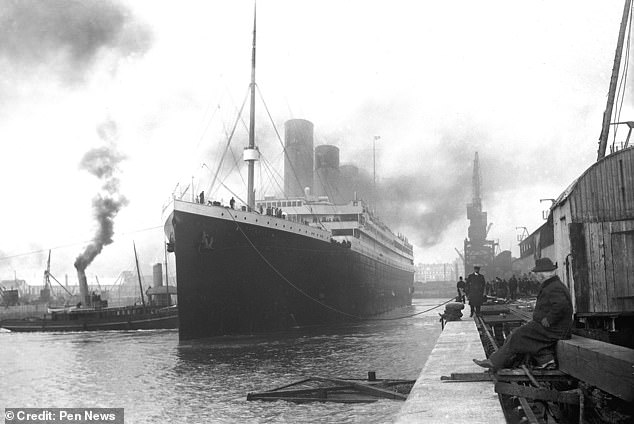
1911 Long-Lost Document Exposes Reality of Titanic’s ‘Unsinkable’ Claims Before Maiden Voyage
The Unsinkable Myth: Titanic’s Fate and the Truth Behind the Legend
[Image: Titanic leaving Southampton on April 10, 1912]
The RMS Titanic’s sinking on April 15, 1912, cemented its association with the term “unsinkable.” Yet, debates persist: was the ship actually labeled this way before its demise? While modern sources often claim otherwise, a 1911 document reveals the truth.
The Myth Takes Hold
After the disaster, media amplified the “unsinkable” narrative. A 1912 New York Times headline declared White Star Line’s manager insisted Titanic was unsinkable even after it sank. Pop culture perpetuated the myth, from Beryl Bainbridge’s novels to James Cameron’s 1997 film. However, experts like Richard Howells argued pre-1912 publicity never used the term.
The 1911 Evidence
A little-known document from 1911—unearthed over a century later—proves otherwise. Published by trade journal The Shipbuilder, it described Titanic and sister ship Olympic as “designed to be unsinkable.” Historian Joshua Allen Milford notes Harland & Wolff, Titanic’s builder, took pride in their “practically unsinkable” designs. The Irish News and Belfast Morning News echoed this in 1911, citing watertight compartments that made Titanic “practically unsinkable.”
[Image: Excerpt from 1911 White Star Line brochure]
Public Perception Pre-Disaster
Public confidence likely surged after Olympic—Titanic’s nearly identical sibling—survived a 1911 collision with HMS Hawke. Milford explains this “solidified the unsinkable theory” for Titanic, boosting ticket sales. Even Captain Edward Smith claimed in 1907 that modern ships couldn’t founder, reflecting widespread belief in engineering invincibility.
The Harsh Reality
Titanic’s “unsinkable” design failed catastrophically. The iceberg tore a 300-foot gash, flooding six compartments. Within 2 hours and 40 minutes, the ship vanished, killing over 1,500. Survivor accounts and limited lifeboats exposed fatal flaws in safety protocols.
[Image: Newspaper sketch of lifeboats fleeing the sinking Titanic]
Legacy of a Legend
Post-disaster, the “unsinkable” label became a tragic irony. While pre-voyage claims were nuanced (“practically” unsinkable), the myth overshadowed reality. Historians argue the term gained traction only after the sinking, morphing into a cautionary tale of human hubris.
Titanic: Key Facts
- Maiden Voyage: April 10, 1912 (Southampton to New York).
- Collision: Struck iceberg April 14; sank by 2:20 AM April 15.
- Fatalities: Over 1,500 of 2,224 passengers/crew.
- Discovery: Wreck found in 1985, 12,500 feet below the Atlantic.
[Image: Titanic’s 1911 launch in Belfast]
The Titanic’s story endures as a reminder of ambition and vulnerability. Though labeled “unsinkable” in technical circles, its fate underscores the peril of overconfidence—a legend etched in history.
Disaster Snapshot
- Victims: Included magnates like John Jacob Astor IV and Isidor Straus.
- Post-disaster reforms: Lifeboat requirements upgraded; International Ice Patrol founded.
The Titanic’s mythos, fueled by pre-disaster engineering pride and post-tragedy lore, remains a poignant chapter in maritime history.


